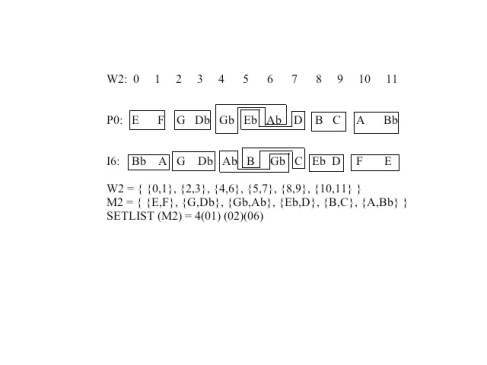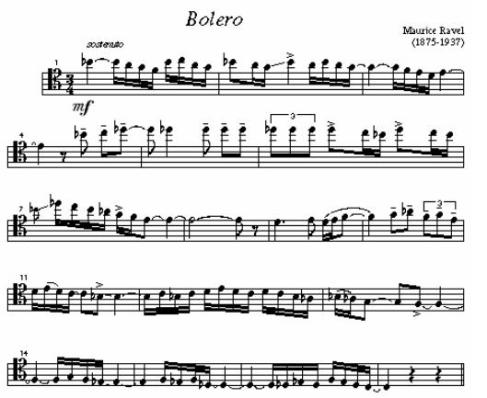In this post, I will continue with the analysis of measures 15-16 of Prelude Op.25 from Richard Kurth’s article.
As observed, in measure 15 the same dyads used in the beginning of the prelude, appear in harmonic manner. {Db,G} in the left hand is actually {2,3} taken from P0 and I6. The first double note {F,E} played by right hand is {0,1} from P0, and {Bb,A} is {0,1} from I6. On the second beat, {Ab,Gb} in the left hand is {4,6} from both P0 and I6, {Eb,D} in the right hand corresponds with {5,7} from P0, and finally {C,B} is {5,7} from I6. P0 dyads in this measure are on strong and I6 dyads are on weak beats. But the balance between them is reached through the fermatas on tetrachords on the weak beat, followed by a rest.
In measure 16, the {Eb,D} in right hand is derived from {8,9} in I6 and {F,E} in the left hand is I6’s {10,11}. These two dyads are articulated from each other by rhythmic and register difference. What is spectacular about the P0 dyads {F,E} and {Eb,D} appeared in measure 15 and 16 is that both of them show up harmonically and in a strict timing in measure, while treated in a melodic and free rhythmical manner in measure 16. Also {Bb,A} and {C,B} dyads appearing both in measure 15 and 16 (as tetrachord) are treated as off-beat in 15 and down-beat in 16. Moreover, the horizontal motion of right hand’s dyads in measure 15 gives us two groups of <F4,Bb3,Eb4, C4> and <E5,A4,D5,B4> carrying exactly the same intervals (perfect 5th and minor 3rd), while keeping the same interval between two voices throughout the measure. In the same measure leaf hand carries two different types of chromatic motion; one is <G3,Gb3,F3,E3> which is a direct chromatic descending motion, and <Db3,Ab2,C3,A2> that holds a chromatic relation between Db and C as well as A and Ab, which is virtually the rhythmically augmented imitation of <F4,Bb3,Eb4,C4> in the right hand.
The rhythmic relation between the three passages in each hand is the similar with a different ratio among the hands. In right hand, 8 notes are followed by 16th notes, while in left hand, the eighth note at the beginning of measure 16 is preceded by quarter notes in measure 15, which delivers the concept of imitation in the left hand, dragging the attention from right hand to left.
TO BE CONTINUED! :]







